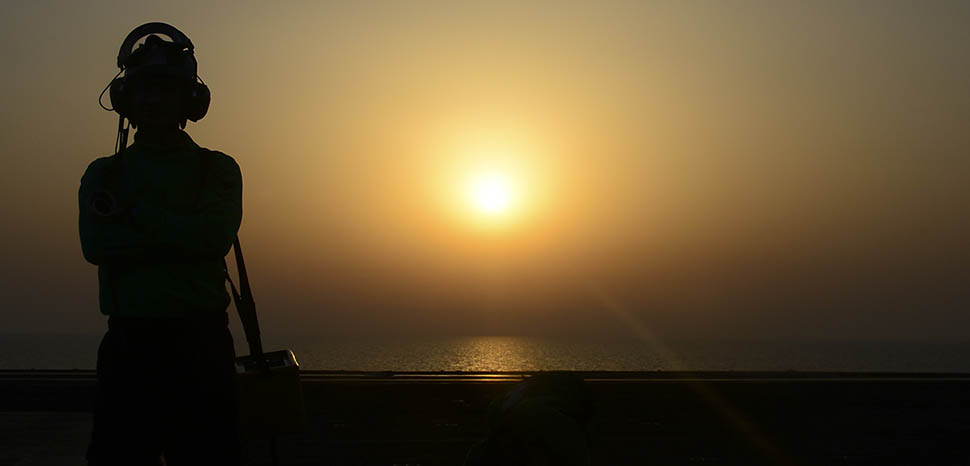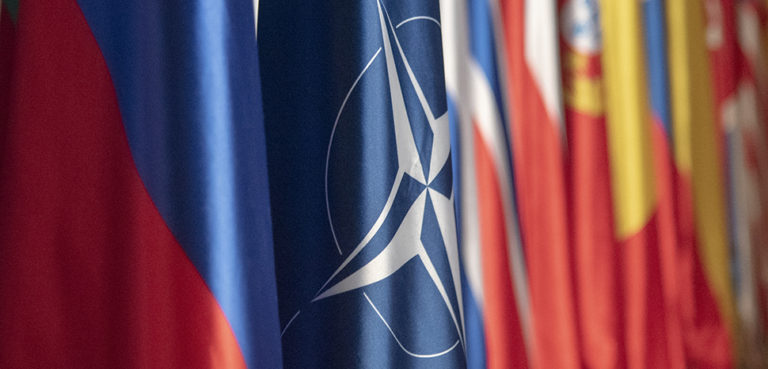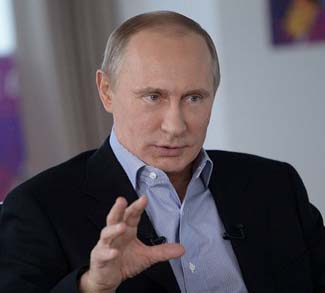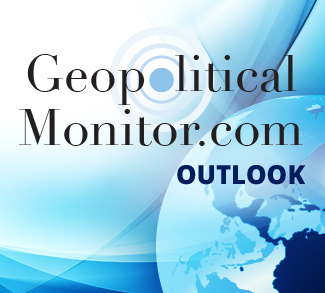The Cold War of the 20th century was essentially a geopolitical confrontation involving the world’s leading thalassocracy versus the top continental tellurocracy. Under this bipolar order, the Western maritime power of the United States competed with the Eurasian land power of the Soviet Union for global hegemony. In this rivalry, the risk of an apocalyptical Armageddon discouraged the prospect of a direct nuclear exchange between the two superpowers.
Europe was the epicenter of the clash and even though tensions were —for the most part— kept frozen through the distribution of spheres of influence, mutual hostility between NATO and the Warsaw Pact never subsided. Both Washington and Moscow understood that their dispute had to be managed in order to guarantee the preservation of strategic stability. Yet, Americans and Soviets fought each other in peripheral theaters of engagement from the “third world,” usually through their intelligence services and proxy forces. In this unconventional conflict, the CIA and the KGB masterminded coups, targeted assassinations, espionage, covert missions, psychological operations, diplomatic intrigues, civil wars, the rise of armed militias and all sorts of ‘active measures’ in places like the Middle East, Sub-Saharan Africa, Asia, Latin America and the Caribbean. A setback anywhere was a setback everywhere that required a quid pro quo. In particularly contested flashpoints —like Korea, Vietnam and Afghanistan— the superpowers intervened directly, but that was the exception rather than the rule. This more or less balanced correlation of forces existed until the implosion of the USSR. As is known, this antagonism was underpinned not just by incompatible interests, but also by contrasting ideological models of political economy.
The demise of the Cold War brought an ephemeral unipolar configuration. Under ‘Pax Americana’, overenthusiastic intellectuals and policymakers assumed that liberal democracy, a rules-based order, free markets and the Western conception of human rights would flourish on a global scale. Yet, this illusion was eclipsed by the relentless march of history. The second “twenty years’ crisis” has unleashed chaos, anarchy, uncertainty, bloodshed, forever wars and unorthodox forms of conflict. Several regions and states have been engulfed by the tectonic shockwaves of the ensuing turmoil and complex interdependence has fueled the proliferation of threats related to the prospects of coercion, disruption, subordination, and conquest. Under this ominous Zeitgeist, the spectre of strategic competition between status quo and revisionist great powers has been reactivated.
Still, this episode is not necessarily a rematch. It is something far more unpredictable, complex, and dangerous. In today’s increasingly multipolar international system, there are three major fronts in which the global balance of power may be reshuffled in the foreseeable future. In each of them, the remnants of unipolar overstretch are being contested by assertive states.
Eastern Europe and the Post-Soviet Space
For Russian statecraft, the dissolution of the Warsaw Pact and the fall of the Soviet Union was catastrophic because Moscow lost the defensive buffers that protected the heartland of European Russia. Without strategic depth, the major political and economic nerve centers of the Russian state would be perpetually exposed to potentially hostile forces. From the Kremlin’s perspective, the dismemberment of the former Yugoslavia, the eastward expansion of NATO and the outbreak of “color revolutions” orchestrated by Washington and Brussels as regime change operations in pivotal post-Soviet states were seen as deeply aggressive moves which endangered Russian national security. Russia’s earlier expectations to join the collective West as a senior partner were shattered by reality. As the perception of encirclement grew, Russia felt the need to push back. The Russian attempt to turn the tide is reflected in the use of military force —in places like Georgia, Kazakhstan and Ukraine— but it also involves ingredients such as nuclear saber-rattling and hybrid warfare. Russia’s versatile arsenal also includes the esoteric tradecraft of clandestine operations, Maskirovka, the weaponization of energy supplies, infiltration, cyberattacks, asymmetric force multipliers and innovative agitprop tactics.
Although Russia behaves as an assertive (and often predatory) great power, its objectives are limited. Even if Moscow wanted to militarily subjugate Europe, it lacks the political appetite and the material ability to do so. The idea of Russian tanks overrunning the Fulda Gap or even Warsaw is out touch with reality. Instead, what the Kremlin intends to achieve is regional hegemony in the so-called ‘near abroad’ — Eastern Europe, the Baltics, Transcaucasia and Central Asia — and then to redraw the architecture of European security in a way that serves Russian national interests. These efforts respond mostly to a defensive logic because they are motivated by the need to counter the fear of envelopment.
However, the revival of the Russian neo-Byzantine imperial tradition under the hawkish rule of the Siloviki has also played a key role in the willingness to rollback American geopolitical projection in Eastern Europe and the post-Soviet Space. Furthermore, Russia also intends to position itself as a civilizational and ideological pole whose values, traditions and worldviews do not mirror the post-modern cosmopolitan doctrines preached in Washington, Brussels, and Davos. Long gone are the days in which Peter the Great tried to remake the profile of Russia in accordance with European standards. Nowadays, Russia’s pivotal trajectory towards the East shares the spirit of the geopolitical theories formulated by Yevgeny Primakov and Aleksander Dugin.
In this context, the invasion of Ukraine was a dangerous act of desperation due to the ultimate failure of Russian intelligence to alter Kiev’s strategic orientation through subtler means. For the Americans, the invasion offered an opportunity to weaken Russian strength without a direct military commitment. Facts on the ground and the balance of resolve suggest that Russia seems determined to prevail in what regards as an existential conflict, even if that comes with high costs and risks. Russia has even managed to deflect and overcome the impact of Western punitive economic sanctions. Nonetheless, even if the outcome of the attritional conflict is somehow favorable for Moscow — the partition of Ukraine, its subordination or its dismantlement as a functional national state — asymmetric strategic competition is unlikely to recede. One reason for this is that Washington has always been concerned about close links between Moscow and Berlin. The combination of Russian natural resources, WMDs, manpower and intelligence plus German wealth, industry and technology would represent a formidable challenge for the US. In turn, the Russians will do everything in their power to decouple European states from NATO’s gravitational pull in order to diminish the American strategic grip on the European rimland. Now that Moscow has crossed the Rubicon, the die has been cast.
Still, since Russia cannot overtake the US as a hegemonic pretender, a negotiated settlement — involving pragmatic trade-offs — may perhaps ensure a reasonable modus vivendi. After all, Washington has far more powerful enemies in its crosshairs.
The Greater Middle East
As a region at the crossroads of imperial pursuits and trade routes, the Middle East has historically been a magnet that attracts the involvement of extra-regional powers. However, powerful local states have also tried to assert their dominance. In this regard, Persia has developed an organic imperial tradition since the days of the Achaemenids. The ancient Persians fought against Greeks, Romans, and Byzantines. Later, the rise of European empires and internal problems relegated Persia as an unimportant state. For example, Iran played no meaningful active role in the so-called ‘Great Game’ in which Brits and Russians struggled for the geopolitical control of Central Asian corridors. In the 20th century, Iran was treated like a backwater whose relevance was determined merely by its abundant oil deposits. The overthrow of nationalist Prime Minister Mohammed Mossadegh in the early Cold War by the CIA generated substantial popular resentment. After that, Iran — along with Turkey and Israel — operated as a vector of American influence in the region and strategic counterweight against the Arab states supported by the Soviets. Yet, the sudden eruption of the Islamic Revolution was a game-changer. The new regime was seen as an unpredictable wild card that fueled strategic anxieties in neighboring states and beyond. Accordingly, the Americans armed both sides in the Iran-Iraq war with the expectation that they would bleed each other dry. In a nutshell, there are scores waiting to be settled between Washington and Tehran.
Ironically, the US military interventions in Afghanistan and Iraq provided a valuable opportunity worth harnessing by Tehran in pursuit of regional hegemony. The ensuing chaos turned out to be a ladder for Iran to extend the threshold of its footprint under conditions shaped by sectarian carnage and multiple power voids. Ever since, the Iranians have invested many resources in the development of a ‘Shiite Crescent’ as a geopolitical project under Tehran’s suzerainty. For all intents and purposes, this scheme has been progressing. Thanks to the strategic tutelage of like-minded nonstate militias (such as Hezbollah, Hamas, the Houthis and the extinct Mahdi Army); partnerships with local allies (like Syria under a regime ruled by the Alawites); the threat to block maritime traffic through the Strait of Hormuz; and the irregular warfare know-how of the Quds force, Iranian influence is felt in the Levant, Mesopotamia, the Arabian Peninsula, the Persian Gulf and Central Asia. Iran has managed to threaten Saudi Arabia and Israel — both of which are firmly in the orbit of Washington’s foreign policy agenda — hit US targets in the region and fuel ‘popular unrest.’ The Iranians have mastered the art of playing with fire without getting burned themselves. Interestingly, this bid for regional hegemony has been justified through ideological claims inspired by ‘anti-imperialist resistance’ and the banner of Shiite messianic fervor.
Yet, Tehran’s plans have not gone unopposed. In fact, the regime has encountered a fierce backlash from Washington, Jerusalem, Riyadh, and even Sunni jihadist forces like the so-called “Islamic State.” So far, a direct military clash has not occurred, but the ominous specter of war is haunting the entire region as the overarching fallout of the Israel-Hamas War spreads like wildfire. As a result of its unwavering support for Israel, the military and political blowback of these hostilities is already dragging (unwittingly?) the US into the fight as a co-belligerent. This low-intensity conflict is escalating and, if its chain reaction spirals out of control, it can ignite an actual kinetic war.
There have been Western diplomatic overtures to facilitate détente with Iran, as well as hostile acts — launched by Washington and Jerusalem — designed to undermine Tehran’s ambitions or even trigger regime change. Yet, neither carrots nor sticks have convinced the Iranians to abandon their willingness to remake the regional balance of power or forsake its nuclear program, which would enable them to achieve strategic parity vis-à-vis the Israelis. In fact, it looks like the Iranians are raising the stakes. The heavy-handed Israeli retaliatory campaign against Hamas and its resonance throughout the Muslim Arab world offers yet another opportunity for Tehran to further its interests, as well as to sow discord as a way to weaken its enemies.
The Indo-Pacific
Rather than a national state, China can be more accurately regarded as a historical empire whose prosperity, civilizational achievements, innovations, and cultural prestige were renown for many millennia. As such, it has influenced the Far East, Central Asia, and Indochina. However, in the 19th and 20th centuries, the ‘Middle Kingdom’ underwent a series of humiliations as a result of internal trouble, stagnancy and foreign aggression committed by Britain, Japan, and Russia. Moreover, the implementation of overzealous ideological policies after the Chinese Civil War — including the ‘Great Leap Forward’ and the ‘Cultural Revolution’ — generated counterproductive results for Chinese national interests. The enduring impacts of these setbacks would not be reversed until the implementation of the pragmatic reforms undertaken by Deng Xiaoping in the 80s.
On the other hand, General Karl Haushofer prophesied that the Indo-Pacific oceanic Grossraum had the potential to become one of the world’s major centers of geopolitical gravity in the long run. The fulfilment of this prospect did not seem likely after the crushing defeat of Imperial Japan in WW2. However, the prediction of an ‘Asian Century’ is materializing incrementally. During the Cold War, military conflicts were fought in the Korean peninsula and Southeast Asia. In turn, the Americans established a strong presence in strategic locations throughout the Asian rimland, including Japan, the Philippines, South Korea, and Thailand. The balance of power also changed after the Sino-Soviet split and the subsequent realignment of Beijing towards the US, engineered by Henry Kissinger and Zhou Enlai. Furthermore, the meteoric rise of late industrialization in various Asian economies raised the region’s strategic profile. In the span of a generation, China —through a model of state-led capitalism— achieved a degree of economic development that upgraded its national power in the fields of advanced industries, technological innovation, trade, finance, and monetary affairs. The results are impressive. China has the world’s second largest GDP. Chinese world-class companies manufacture state-of-the-art products exported to countless consumer markets. China plays an unparalleled role in international economic exchanges. China has the world’s largest foreign exchange reserves. Last but not least, the growing internationalization of the Chinese yuan (CNY) as a minor reserve currency is also a sign of increasing influence and wealth. Deng’s remarks about the gloriousness of being a rich nation have been validated by reality.
Simultaneously, the assertiveness of the Middle Kingdom’s geopolitical projection has been reawakened. In contrast to the limits of Russia and Iran as aspiring Behemoths, China already has the ability to operate as a full-spectrum peer competitor of the US. However, what China seeks at the moment is not global hegemony, but regional hegemony in Asia in a way similar to the efforts of the US to position itself as the dominant power in the American hemisphere in the era of the Monroe Doctrine.
Although China is acting as a revisionist power, it does not intend to rely on military force to overturn the existing status quo. After all, classical Chinese strategic thinking praises the wisdom of winning without fighting. Beijing’s promise that its rise will be peaceful does not mean that it will be frictionless or harmonious, only that it prefers a trajectory in which hard power is not required in its ‘long march’ towards superpower status. Instead, the Middle Kingdom is using neo-mercantilist strategies of economic statecraft to place itself as the cornerstone of a vast network of overlapping economic exchanges which go from Iberia to the Korean peninsula and beyond. With the promise of profitable business opportunities, development, investment, credit and trade, China intends to absorb markets rather than to conquer colonies. Cash is king, not just as money, but also as political instrument that serves the national interest. This is the context in which the creation of multilateral projects headed by China —like the Belt and Road Initiative, the Asian Infrastructure Investment Bank and the Regional Comprehensive Economic Partnerships— must be understood. Beijing is laying the groundwork for the development of a parallel system of international economic governance beyond the control of Western powers. What the Middle Kingdom envisages for the consolidation of a regional order is a Greater Eurasia Co-Prosperity Sphere with itself as the first amongst equals.
Still, even though China does not want to summon the spirit of the Warring States period, Beijing is strengthening its military capabilities in case preparedness is needed for a confrontation. This upgrade contemplates the development of a blue-water navy to counter the Americans’ ability to restrict China’s access to international waterways. In a zero-sum international system, the rise of China motivates strategic anxieties in both Washington and several regional capitals. Unsurprisingly, existing coalitions — like the Five Eyes — are being repurposed and new ones are being built — AUKUS, the Quad — in order to contain China’s conventional and unconventional quest for Lebensraum in Asia. So far, conflict has not surfaced in Asia because no red line has been crossed yet. Nevertheless, tensions remain high and the co-existence of many players with incompatible interests is problematic for regional stability. Barely a few years ago, Indian and Chinese soldiers killed each other with sticks and stones in a border skirmish. Together, trends like North Korean military muscle-flexing, the remilitarization of Japan, a simmering trade war between the US and China, changing regional geopolitical alignments, the threat of militant Islamism in Central Asia, the contentious status of Taiwan and Beijing’s maritime disputes with Manila and Tokyo over the control of insular positions point in a troublesome direction. Under these conditions, the prospective clash between China as a rising challenger and the US as a declining and beleaguered hegemon is exceedingly dangerous. At this point, it is unknown if Beijing and Washington can avert the proverbial Thucydides’ Trap.
Concluding Remarks
Unlike its forerunner, Cold War 2.0 is not a bipolar confrontation in which the two players are trying to outgun each other. Instead, it entails a three-fold multipolar strategic chessboard. In each of its adversarial arenas, the US — as a status quo power with residual unipolar pretensions — and its corresponding allies are facing the assertive challenge of revisionist great powers that seek to remake the existing correlation of forces in their own regions. China, Russia, and Iran seem committed to rollback ‘Pax Americana’ in the Indo-Pacific, the post-Soviet space, and the Greater Middle East respectively. This backlash endorses the predictions of Kenneth Waltz about unipolarity as an unnatural, self-defeating, and unsustainable model of world order. In an ironic twist of fate, the very attempt to freeze history is precisely what is driving the impersonal forces which are accelerating its dynamic progression.
In the dangerous and complex era of a triple ‘Great Game’, oversimplifications need to be avoided. It would be analytically mistaken to assume that China, Russia, and Iran are strategic allies that coordinate their masterstrokes at every turn. Although the three are challenging American power in their own neighborhoods, their national interests are not fully aligned, and their mutual connections are often transactional. Likewise, their revisionism is selective. China is a revisionist power in Asia, but not in Europe. Russia is revisionist in the surroundings of its geopolitical perimeter, but not in East Asia.
In turn, Washington is unlikely to back down or compromise in any of the three theaters of engagement. In fact, it looks like the Americans are relying on offensive measures designed with the expectation that the ensuing entropy will bring down the geopolitical projects of its rivals in Beijing, Moscow, and Tehran. After all, whereas the US can survive as a great power even if it loses hegemony, the direct impact of the resulting disarray will be weathered by Washington’s regional allies. As a result of its geopolitical position — shielded by distance and the world’s largest oceans — the US likely feels that it can afford to adopt an aggressive approach in the three fronts simultaneously, but there is no guarantee that this policy will lead to success. The US is comparatively superior to its three Eurasian enemies, but so was Athens when it was defeated by Sparta in the Peloponnesian War. In fact, the Eurasian powers are not trying to invade or destroy the US, their strategic endgame is to outfox and checkmate its unipolar schemes.
The world is witnessing a neo-Cold War fought in a multipolar environment. The outcome remains unclear. The present strategic competition is volatile not just because of the plurality of players, but also because the specters of conventional warfare, nuclear threats, and the use of non-military vectors of power projection are interwoven. Furthermore, although focused mostly on the Eurasian landmass, this dispute transcends the territorial horizon of its original epicenters. For instance, Chinese mercantile projection is strong in Latin America and Russia has gained multiple beachheads in Africa. In other words, these rivalries are being echoed in secondary battlespaces. In addition, there are certain overlaps. For example, both North Korea and Iran are providing weaponry and material support for the Russian war effort in Eastern Ukraine. An interesting implication of this geopolitical turbulence is that it will provide strategic distractions and opportunities so that middle powers —such as Brazil, India Mexico, South Africa, Turkey— can act in an increasingly self-confident way without having to take sides.
The writing on the wall warns that the combination of three parallel strategic collisions might bring disastrous results. In the meantime, the temperature is rising, and a critical boiling point will be reached sooner rather than later unless sober diplomatic deals are made as guarantees that protracted rivalries will be managed so that systemic strategic stability does not collapse. Machiavellian wisdom teaches that it is better to rely on virtue than on the treacherous vicissitudes of fate. After all, in the art of statesmanship, deterrence and amoral Faustian pacts are preferable to avoidable wars motivated by maximalist aspirations, inertia or sanctimonious ideologies. Time is running out.
The views expressed in this article belong to the authors alone and do not necessarily reflect those of Geopoliticalmonitor.com.




